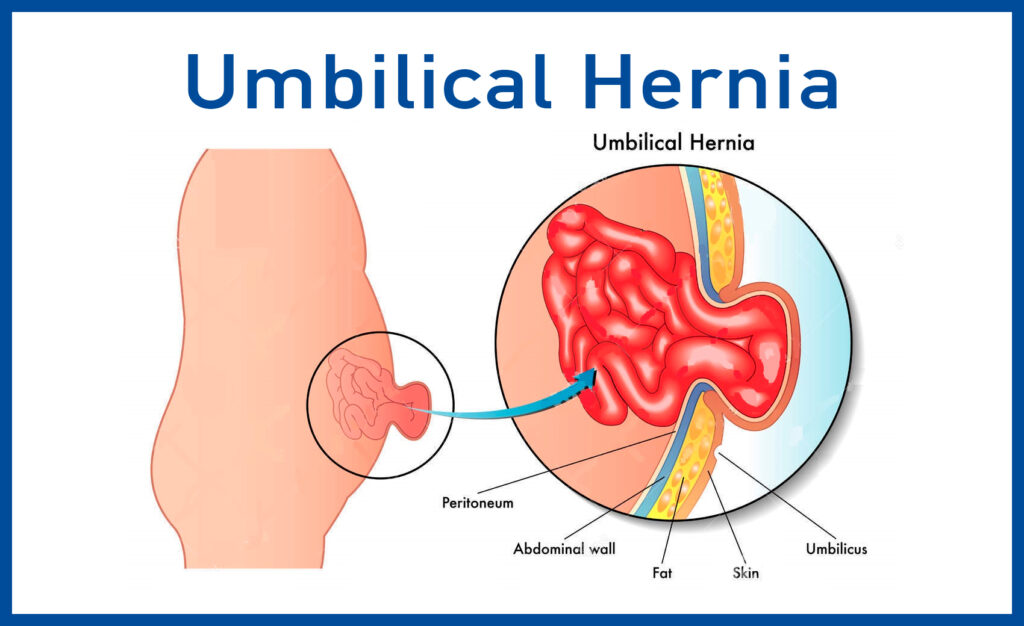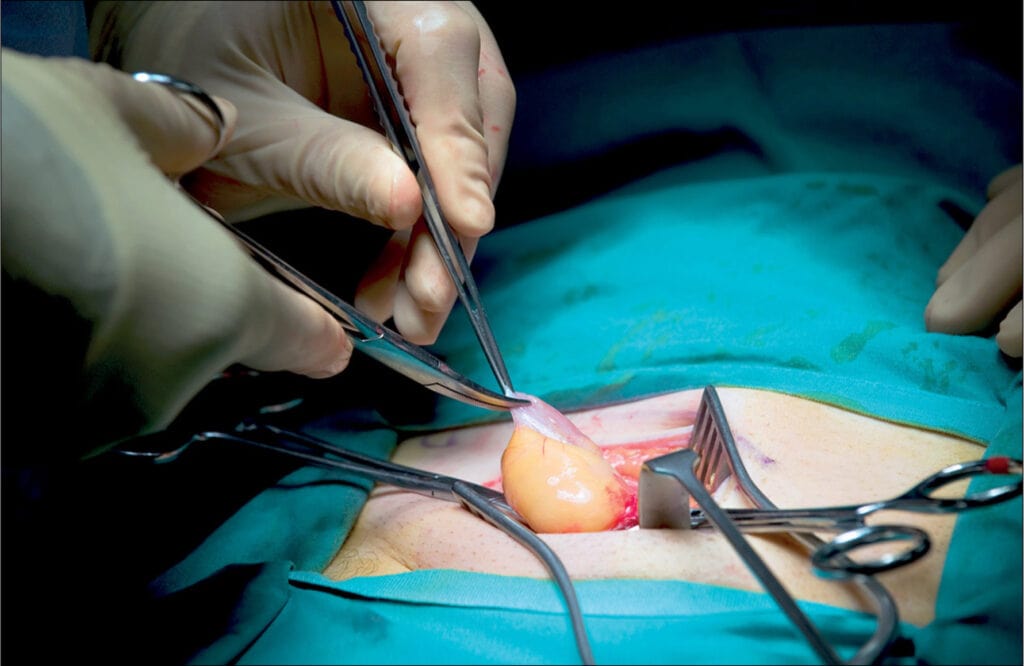WHAT IS AN UMBILICAL HERNIA?
An umbilical hernia happens when part of your intestine bulges through the opening in your abdominal muscles near your belly button (navel). Umbilical hernias are common and generally harmless.
Umbilical hernias are most common in infants, but they could affect adults as well. In an infant, an umbilical hernia might be particularly evident when the infant cries, causing the belly button to protrude. This is a typical sign of an umbilical hernia.
Children’s umbilical hernias usually close on their own in the first two years of life, though some remain open into the fifth year or longer. Umbilical hernias that appear during adulthood are more likely to require surgical repair.

SYMPTOMS
An umbilical hernia makes a soft swelling or bulge near the navel. In babies who have an umbilical hernia, the bulge might be visible only when they cry, cough, or strain.
Umbilical hernias in children are generally painless. Umbilical hernias that appear during adulthood might cause abdominal discomfort.
WHEN SHOULD YOU SEE A DOCTOR?
If you suspect that your baby has an umbilical hernia, speak with the baby’s doctor. Look for emergency care if your baby has an umbilical hernia and:
- Appears to be in pain
- Starts to vomit
- Has tenderness, swelling, or discoloration at the area of the hernia
The same guidelines apply to adults. Speak with your doctor if you have a bulge near your navel. Look for emergency care if the bulge becomes painful or tender. Immediate diagnosis and treatment could help prevent complications.

CAUSES
During gestation, the umbilical cord passes through a tiny opening in the baby’s abdominal muscles. The opening generally closes just after birth. If the muscles do not connect together completely in the midline of the abdominal wall, an umbilical hernia might appear at birth or later in life.
In adults, excessive abdominal pressure contributes to umbilical hernias. Causes of increased pressure in the abdomen are:
- Obesity
- Multiple pregnancies
- Fluid in the abdominal cavity
- Previous abdominal surgery
- Long-term peritoneal dialysis to treat kidney failure

RISK FACTORS
Umbilical hernias are most common in infants — particularly premature babies and those with low birth weights. In the United States, black infants appear to be at slightly increased risk of umbilical hernias. Boys and girls are equally affected by the condition.
For adults, being overweight or having multiple pregnancies might increase the risk of developing an umbilical hernia. This kind of hernia tends to be more common in women.
COMPLICATIONS
For children, complications of an umbilical hernia are uncommon. Complications could happen when the protruding abdominal tissue becomes trapped (incarcerated) and could no longer be pushed back into the abdominal cavity. This decreases the blood supply to the section of the trapped intestine and could lead to abdominal pain and tissue damage.
If the trapped portion of the intestine is fully cut off from the blood supply, it could lead to tissue death. Infection might spread throughout the abdominal cavity, causing a life-threatening situation.
Adults with umbilical hernias are somewhat more likely to have a blockage of the intestines. Emergency surgery is generally required to treat these complications.

DIAGNOSIS
An umbilical hernia is diagnosed when a physical examination is carried out. Sometimes imaging studies — like an abdominal ultrasound or a CT scan — are used to screen for complications.
TREATMENT
Most umbilical hernias in babies close on their own by age one or two. Your doctor might even be able to push the bulge back into the abdomen during a physical examination. You must not try this on your own, however.
For children, surgery is generally reserved for umbilical hernias that:
- Are painful
- Are slightly larger than 1/4 to 3/4 inch (one to two centimeters) in diameter
- Are large and do not decrease in size over the first two years of life
- Do not disappear by age five
- Become trapped or block the intestine
For adults, surgery is generally recommended to avoid possible complications, particularly if the umbilical hernia gets bigger or becomes painful.
During surgery, a tiny incision is made near the belly button. The herniated tissue is returned to the abdominal cavity, and the opening within the abdominal wall is stitched closed. In adults, surgeons usually use mesh to help strengthen the abdominal wall.
If you or anyone you know is suffering from an umbilical hernia, our expert providers at Specialty Care Clinics will take care of your health and help you recover.
Call us on (469) 545-9983 to book an appointment with our specialists.
